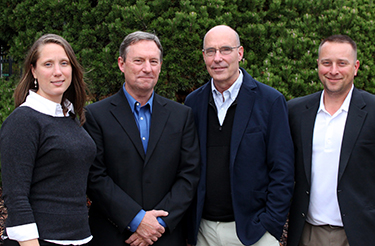|
Subscribe / Renew |
|
|
Contact Us |
|
| ► Subscribe to our Free Weekly Newsletter | |
| home | Welcome, sign in or click here to subscribe. | login |
Architecture & Engineering
| |
February 8, 2016
Four firms join forces in Salus to help clients prepare for natural disasters
Journal Staff Reporter

Hart Crowser has formed a partnership to provide planning, engineering, architectural and financial consulting services to help companies and public agencies prepare for natural disasters.
The new firm is called Salus Resilience, and is based in Portland. It is made up of Hart Crowser, a geotechnical, environmental and natural resources firm; Jay Raskin Architect; structural engineer WRK Engineers; and ECONorthwest, which provides economics, planning and financial consulting services.
Allison Pyrch, an associate geotechnical engineer with Hart Crowser, will head the new firm.
Salus will do resilience assessments to determine where a building, utility, infrastructure or system is vulnerable to natural disasters, and create a plan to incrementally fix any problems. Pyrch said Salus is taking a team approach because resilience planning has many facets.
The firm is named for Salus, the Roman goddess of safety, welfare, health and prosperity.
Pyrch said Salus was formed because the four firms anticipate an increase in demand for natural disaster planning — especially after last year's article in The New Yorker titled “The Really Big One.” The subtitle was “An earthquake will destroy a sizable portion of the coastal Northwest. The question is when.” She said the deadly 2012 Hurricane Sandy also heightened interest.
Oregon and Washington have developed resilience plans in the last five years, and there's been more national attention since Sandy about the need for resilient buildings and infrastructure, she said.
Resilience plans developed by Salus could be for a building, county or state, or part of master planning for a new development.
Salus will determine how a business or public agency can keep running following a disaster. It will also do financial planning, including assistance with grant proposals, to help get money for disaster preparation.
Salus can also do the work called for in the plans, Prych said, such as seismic retrofits or architectural design to make buildings safer.
Prych said communities, companies and agencies need to be prepared.
“If you have large sectors of an electrical grid in a tsunami zone, that's not going to be resilient,” she said. “If you have a platinum-rated LEED building that is not designed to withstand earthquake forces, that's not really sustainable.”
Pyrch said interest is keen now in planning for earthquakes, hurricanes, floods, fires, storms and climate change.
For instance, Seattle-based Hart Crowser is on a team doing natural disaster planning for some Oregon airports, she said. It also is interviewing for a feasibility study to replace or retrofit the Burnside Bridge in Portland because of seismic concerns.
Lynn Porter can be
reached by email or by phone
at (206) 622-8272.


